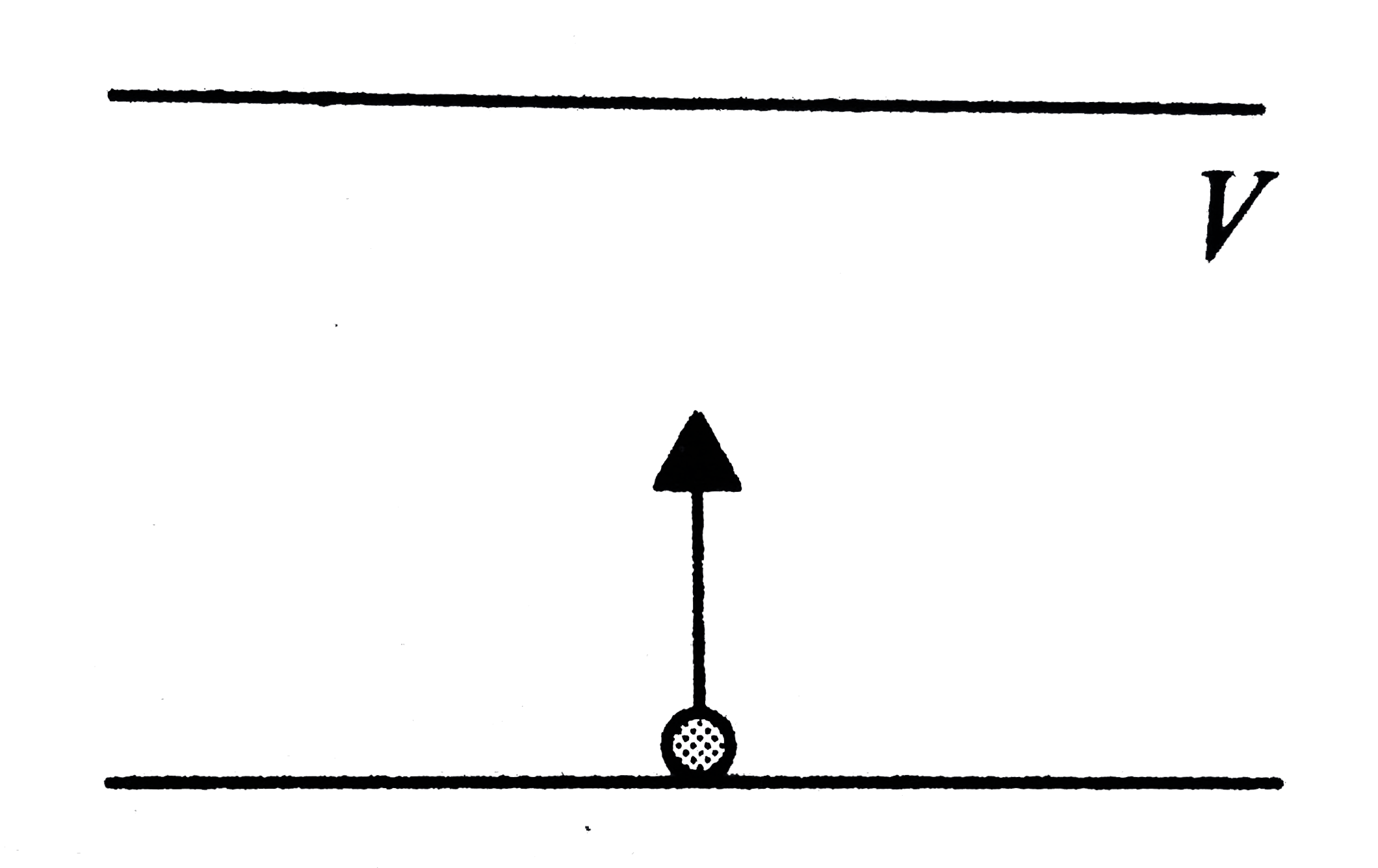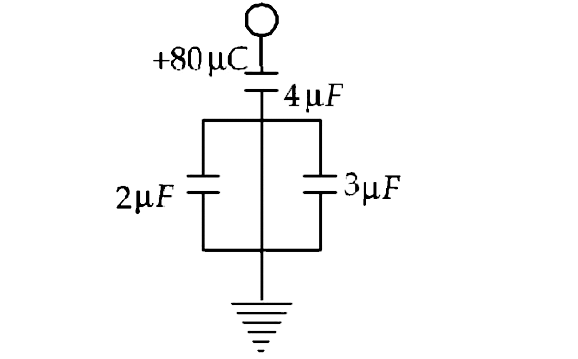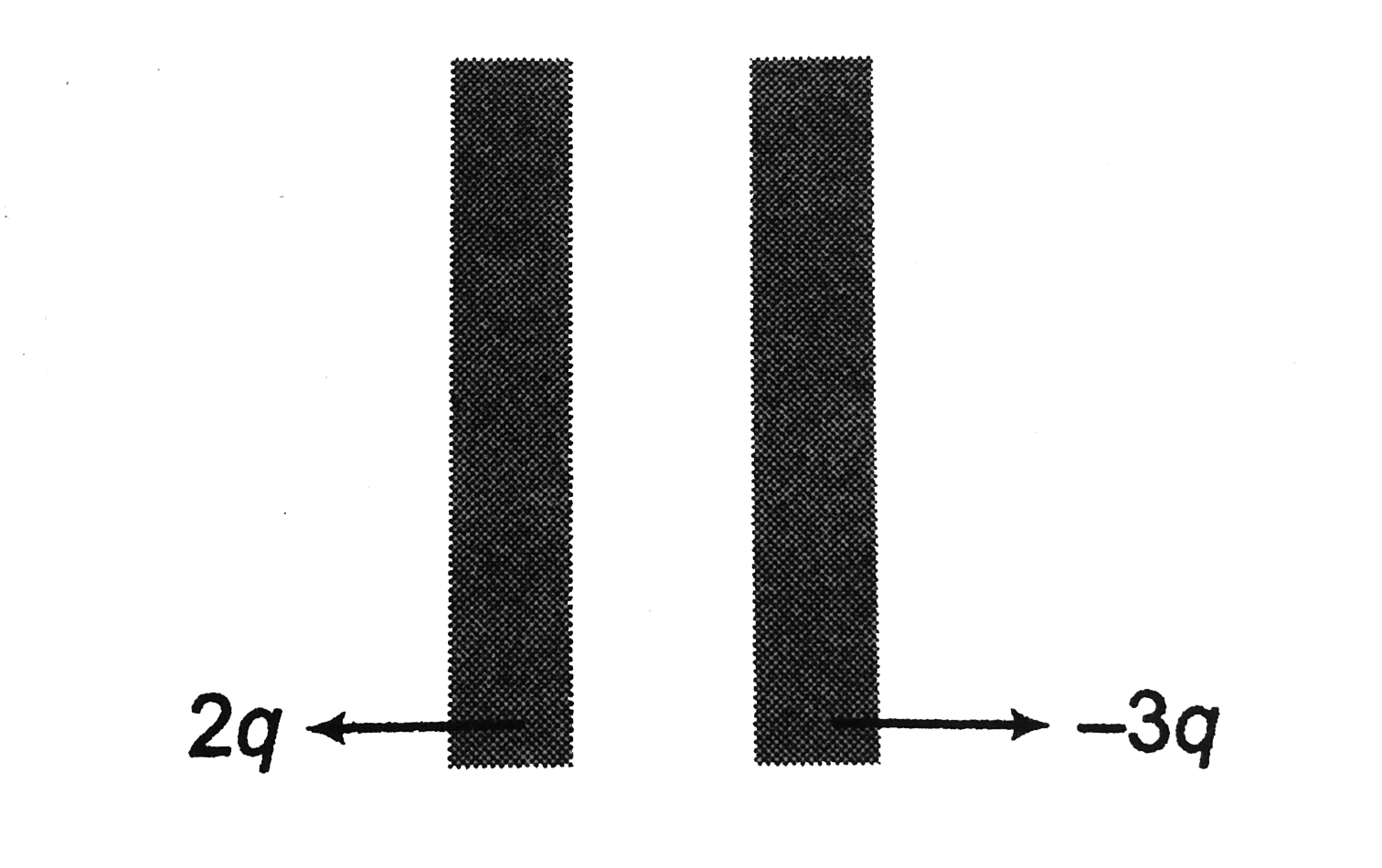Consider the arrangement of parallel plates of the previous problem. If 1.0 nC charge is given to the upper plate instead of the middle, what will be the potential difference (in V) between (a) the upper and the middle plates and (b) the middle and the lower plates ? If Capacitance of each plate is 50 nF .
The correct Answer is:(a) 10 (b) 10
To solve the problem, we need to find the potential difference between the plates when a charge of 1.0 nC is given to the upper plate instead of the middle plate. The capacitance of each plate is given as 50 nF (nanoFarads).
1. Identify the Charges on the Plates:
- Given that 1.0 nC (nanoCoulomb) charge is placed on the upper plate (let's call it Plate 1), we need to determine how this affects the charges on the other plates.
- The charge on Plate 1 is +1.0 nC.
- To maintain neutrality, the charge on Plate 2 (middle plate) will be -0.5 nC, and the charge on Plate 3 (lower plate) will also be +0.5 nC.
2. Calculate the Potential Difference Between Upper and Middle Plates (V12):
- The formula for potential difference (V) between two plates is given by:
V=QC
- Here, Q is the charge on the upper plate (Plate 1), which is +0.5 nC (since we consider the effect of the middle plate charge), and C is the capacitance of the plates, which is 50 nF.
- Convert the values to standard units:
- Q=0.5×10−9C
- C=50×10−9F
- Now, substitute the values into the formula:
V12=0.5×10−950×10−9=0.550V=0.01V=10−2V
3. Calculate the Potential Difference Between Middle and Lower Plates (V23):
- For the potential difference between the middle plate (Plate 2) and the lower plate (Plate 3), we again use the same formula:
V23=Q2C
- The charge on Plate 2 is -0.5 nC, but we will consider the absolute value for the potential difference calculation.
- Thus, we have:
V23=0.5×10−950×10−9=0.550V=0.01V=10−2V
Final Answers:
- (a) The potential difference between the upper and middle plates (V12) is 10−2V.
- (b) The potential difference between the middle and lower plates (V23) is also 10−2V.
- Given that 1.0 nC (nanoCoulomb) charge is placed on the upper plate (let's call it Plate 1), we need to determine how this affects the charges on the other plates.
- The charge on Plate 1 is +1.0 nC.
- To maintain neutrality, the charge on Plate 2 (middle plate) will be -0.5 nC, and the charge on Plate 3 (lower plate) will also be +0.5 nC.
- The formula for potential difference (V) between two plates is given by:
V=QC
- Here, Q is the charge on the upper plate (Plate 1), which is +0.5 nC (since we consider the effect of the middle plate charge), and C is the capacitance of the plates, which is 50 nF.
- Convert the values to standard units:
- Q=0.5×10−9C
- C=50×10−9F
- Now, substitute the values into the formula:
V12=0.5×10−950×10−9=0.550V=0.01V=10−2V
- For the potential difference between the middle plate (Plate 2) and the lower plate (Plate 3), we again use the same formula:
V23=Q2C
- The charge on Plate 2 is -0.5 nC, but we will consider the absolute value for the potential difference calculation.
- Thus, we have:
V23=0.5×10−950×10−9=0.550V=0.01V=10−2V
- (a) The potential difference between the upper and middle plates (V12) is 10−2V.
- (b) The potential difference between the middle and lower plates (V23) is also 10−2V.
Topper's Solved these Questions
- BOOK - RESONANCE ENGLISHCHAPTER - CAPACITANCEEXERCISE - Exercise - 326videos
CAPACITANCE
- BOOK - RESONANCE ENGLISHCHAPTER - CAPACITANCEEXERCISE - High Level Problems16videos
CAPACITANCE
- BOOK - RESONANCE ENGLISHCHAPTER - CAPACITANCEEXERCISE - Exercise - 179videos
CAPACITANCE
- BOOK - RESONANCE ENGLISHCHAPTER - ATOMIC PHYSICSEXERCISE - Advanved level problems17videos
ATOMIC PHYSICS
- BOOK - RESONANCE ENGLISHCHAPTER - COMMUNICATION SYSTEMSEXERCISE - Exercise 313videos
COMMUNICATION SYSTEMS
Similar Questions
Consider the situation of the given figure . If 1.0μC is placed on the upper plate , what will be the potential difference between (a ) the upper and middle plates and (b ) the middle and the lower plate? If capacitance of each capacitor is 50 nF.
View SolutionA charge of 1μC is given to one plate of a parallel - plate capacitor of capacitance 0.1μF and a charge of 2μC is given to the other plate . Find the potential difference developed between the plate .
View SolutionThe plates of a parallel-plate capacior are given equal positive charges .What will be the potential difference between the plates ? What will be the charges on the facing surfaces and on the outer surfaces ?
View SolutionAn electron having charge e and mass m starts from the lower plate of two metallic plates separated by a distance d. If the potential difference between the plates is V, the time taken by the electron to reach the upper plate is given by
 .View Solution
.View SolutionThe force between the plates of a parallel plate capacitor of capacitance C and distance of separation of the plates d with a potential difference V between the plates, is.
View SolutionA charge of 20 microCoulomb is placed on the positive plate of on isolated parallel - plate capacitor of capacitance 10microFarad calculate the potential difference developed between the plates .
View SolutionOne plate of a capacitor of capacitance 2μF has total charge +10μC and its other plate has total charge +40μC. The potential difference between the plates is (in Volt).
View SolutionIn the given circuit, a charge of +80μC is given to the upper plate of the 4μF capacitor. Then in the steady state, the charge on the upper plate of the 3μF capacitor is
 View Solution
View SolutionFour parallel large plates separated by equal distance d are arranged as shown in. The area of the plates is S Find the potential differnce between plats BandC if plate B is given a charge Q.
 .View Solution
.View SolutionCharges 2q and −3q are given to two identical metal plates of area of cross section A. the distance between the plates is d. Find the capacitance and potential difference between the plates.
 View Solution
View Solution

